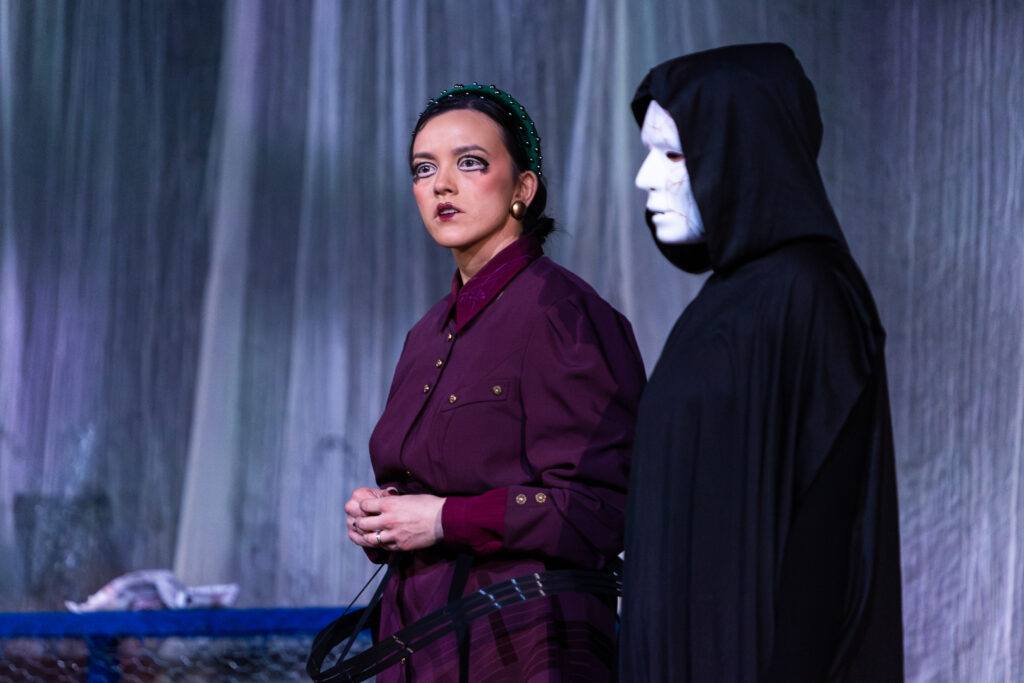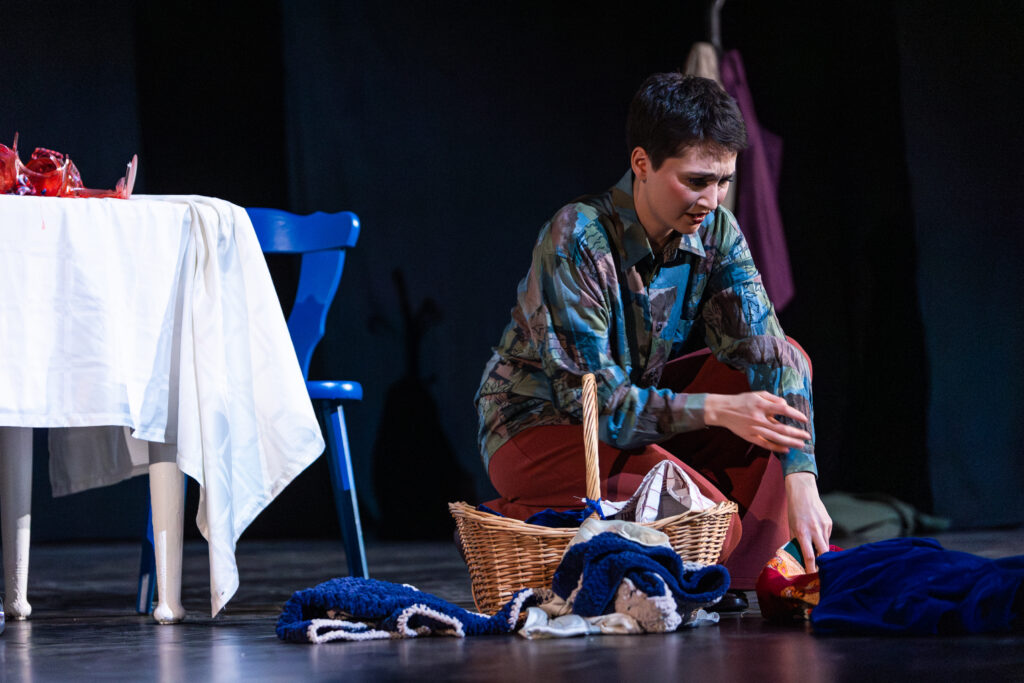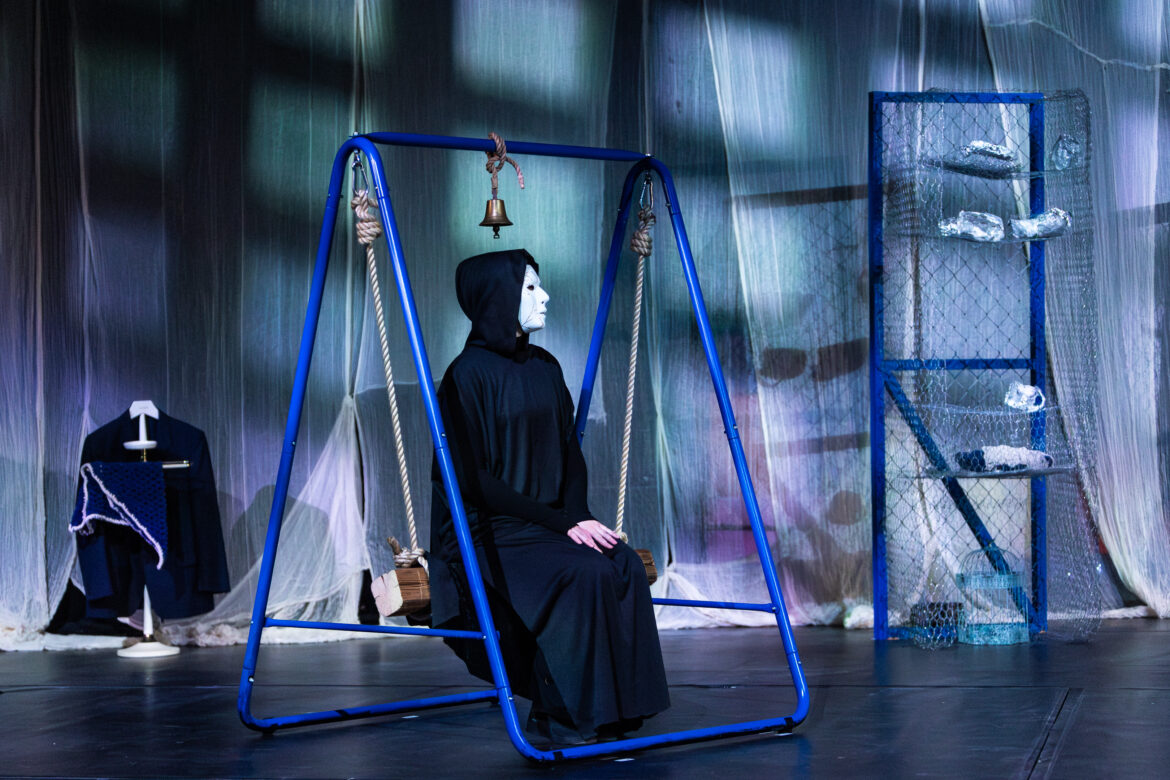By Karlotta Gerst, Vanesa Kaiser, Sophia Kappes
Have you ever wondered what life was like for women a hundred years ago? Women were expected to take on the responsibility of raising children and managing household duties. This traditional lifestyle is still presented today through social media platforms like TikTok, Instagram, and others with the hashtag #TradWives. The term #TradWife refers to the “traditional wife,” and it encourages people to reflect on how life must have been for women in the early 1900s, when being a traditional wife was not a choice. It also highlights how modern “TradWives” envision their lives today.
In my opinion, the play „Trifles“ by Susan Glaspell, recently performed and adapted by the students of the University of Hamburg, provides a powerful depiction of the behavior and lives of women in the early 20th century. Trifles revolves around a murder investigation. John Wright has been found murdered, and his wife, Minnie Wright, is suspected as the main suspect. Sheriff Peters, County Attorney Henderson, and Mr. Hale search for evidence throughout the house, while their wives, Mrs. Peters and Mrs. Hale, stay in the kitchen. As the wives examine their surroundings, they begin to notice small yet significant details about Mrs. Wright’s life. The birdcage adds depth to the storyline because it symbolizes the suffragettes and represents the emotional and physical abuse Mrs. Wright experienced. However, the men dismiss the women’s observations and mock them. This reflects how women’s perspectives were often ignored and their voices went unheard.

The most important and striking element of the play is how these “trifles”—the small details that men overlook—become the key to understanding Minnie Wright’s life, her isolation, and her suffering. The women’s ability to empathize with Minnie allows them to uncover the emotional abuse she endured, which ultimately led to her actions. This not only highlights the gender dynamics of that time but also raises the question of how much has truly changed in the way women’s voices are valued today. The performance was compelling, with strong portrayals of the characters’ frustrations, emotions, and silent solidarity. The minimalist set design effectively reflected the bleakness of Mrs. Wright’s life, and the subtle expressions and gestures of the actresses playing Mrs. Peters and Mrs. Hale added depth to the narrative, conveying emotions that words could not fully express.
One particular scene stuck with me: the lights went out, and each character recited a statistic about women’s sufferings while the others stood frozen. This was a deeply emotional and sentimental moment. Although I had always known that women were abused both mentally and physically, I never realized the extent of it. The method of performance was especially effective—the tension, the focus on the voice, and the stillness all underscored the urgency of the message.

In comparison to other works dealing with similar themes, Trifles stands out due to its simplicity. The entire play takes place in a single location and unfolds within a short time span, which makes the message more direct and impactful. One suggestion for improvement would be to equip all the actors with microphones. At times, it was quite challenging to catch every word, which made it difficult to fully engage with the play. While part of the issue stemmed from audience distractions, such as people talking and leaving the theater during the performance, enhancing the technical setup—particularly the sound quality—would significantly improve the overall experience. This is especially regrettable because the actors delivered outstanding performances, and clearer audio would have allowed their efforts to resonate more effectively with the audience.
Overall, Trifles is a thought-provoking play that sheds light on the overlooked struggles of women, both in the past and in contemporary society. The University of Hamburg’s adaptation did justice to Susan Glaspell’s original work, leaving the audience with a deeper understanding of the importance of seemingly insignificant details—trifles—that can reveal profound truths. I would highly recommend Trifles for its exploration of gender dynamics and political significance. However, it requires focus and a willingness to engage with the text, as it is very dialogue-driven.
Photos by Sarah Naumann


Schreibe einen Kommentar